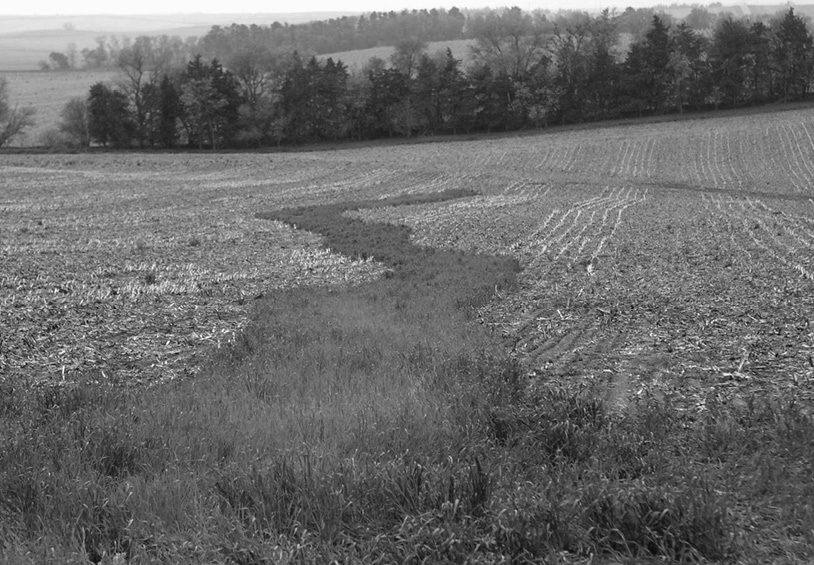No-Till Farmer
Get full access NOW to the most comprehensive, powerful and easy-to-use online resource for no-tillage practices. Just one good idea will pay for your subscription hundreds of times over.

Continuous no-till can go a long way toward keeping soil where it’s supposed to be, but a monster rainstorm falling on soybean residue can still result in ephemeral gullies.
As an NRCS no-till specialist, Dan Gillespie believes grassed waterways should be the first consideration for controlling erosion in flow areas.
The Battle Creek, Neb., no-tiller says he understands waterways can be difficult to manage — particularly when no-tillers are dealing with big sprayers, diagonals or custom applicators that don’t always have the same goal as the farmer.
The solution for many no-tillers may be a cover crop in conjunction with timely shaping and seeding when gullies do occur.
In a corn-soybean rotation — which is typical in northeast Nebraska where Gillespie farms — the smaller amount of residue from the soybean crop and its low carbon-to-nitrogen ratio means residue disappears quickly.
That means a significant rainfall event can create gullies in flow areas and move soil off the field. That’s where a cover crop comes in handy.
“Erosion control is my No. 1 reason for the cover crop,” Gillespie says. “A good rye crop can substantially reduce damage. And there are great side benefits, like producing above- and belowground biomass, increasing organic matter and keeping the soil active.”
Gillespie says continuous no-till is equal to a terrace system in terms of erosion control and can reduce sheet and rill runoff by up to 90%.
“But it’s that 10% we don’t control that can lead to ephemeral…